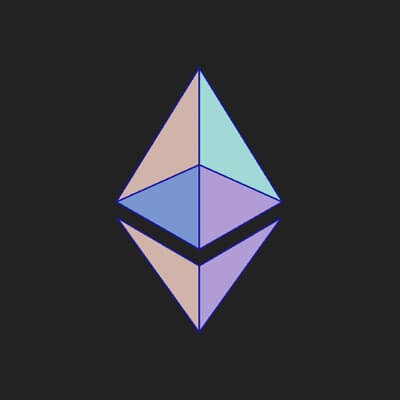- May 13, 2024
- Posted by: admin
- Category: BitCoin, Blockchain, Cryptocurrency, Investments

The emergence of various blockchain scaling solutions has sparked discussions about the differences and roles of Layer 1, Layer 2, Layer 3, parachains, and sidechains in the evolving crypto ecosystem. Understanding these concepts is crucial for developers, investors, and users navigating the complex landscape of blockchain technologies – but it’s not always very clear which is which and why we need so many different types.
Layer 1 blockchains, such as Bitcoin, Ethereum, BNB Chain, and Solana, form the foundational architecture of a blockchain network. These base layer protocols handle the execution, data availability, and consensus aspects of the network, validating and finalizing transactions without relying on another network. Each Layer 1 blockchain has its own native token used to pay transaction fees. However, scaling Layer 1 networks is a significant challenge, often requiring changes to the core protocol, such as increasing block size, adopting new consensus mechanisms, or implementing sharding techniques.
To address the scalability limitations of Layer 1 blockchains, Layer 2 solutions have emerged as a secondary framework built on top of existing networks. Layer 2 protocols shift a portion of the transactional requirement from the main chain to an adjacent system architecture, processing transactions off-chain and recording only the final state on the Layer 1 blockchain. Examples of Layer 2 scaling solutions include the Bitcoin Lightning Network, Ethereum Plasma chains, Optimistic Rollups, ZK-Rollups, sidechains, and state channels. These protocols (mostly) inherit the security of the underlying Layer 1 blockchain while improving scalability, speed, and costs.
The quest to find the optimal scaling solution for Layer 1s is far from static. For example, the Ethereum Foundation moved on entirely from Plasma solutions to scaling, stating,
“While Plasma was once considered a useful scaling solution for Ethereum, it has since been dropped in favor of layer 2 (L2) scaling protocols. L2 scaling solutions remedy several of Plasma’s problems.”
One subsequent L2 solution for Ethereum was sharding, which has now been replaced on the Ethereum roadmap with “rollups and Danksharding.” The evolution has continued post-Dencun upgrade toward scaling via a Layer 2 on top of a Layer 2 – known more commonly as a Layer 3 chain.
Layer 3 blockchains are application-specific chains that settle on Layer 2 networks, enabling further scalability, customization, and interoperability. For instance, Arbitrum Orbit allows developers to create Layer 3 chains, known as “Orbit chains,” that settle on Arbitrum’s Layer 2 chains, Arbitrum One, and Arbitrum Nova. These Orbit chains can be configured with custom gas tokens, throughput, privacy, and governance, with projects like XAI, Cometh, and Deri Protocol already building on Arbitrum Orbit.
Similarly, Optimism’s OP Stack powers a “Superchain” of Layer 3 blockchains that share security and communication layers, with Coinbase’s Base being a prominent Layer 3 chain on the OP Stack. The OP Stack aims to make Layer 3 chains interoperable. Other Layer 3 solutions include zkSync’s Hyperchains and Polygon’s Supernets. The key benefits of Layer 3s include hyper-scalability through recursive proving and compression, customization of gas tokens, throughput, privacy, and governance, interoperability between Layer 3 chains and with Layer 1/2, and low costs and high performance.
Another solution from outside of the EVM ecosystem is Parachains. Parachains are a key component of the Polkadot and Kusama networks and are also application-specific, independent blockchains that run in parallel within these ecosystems. Parachains connect to the main Relay Chain, leasing its security while maintaining their own governance, tokens, and functionalities. These chains can process transactions and exchange data with each other seamlessly using cross-chain communication protocols like XCMP. Collator nodes maintain the entire state of a parachain and provide proofs to the Relay Chain validators.
Sidechains, another type of scaling solution, are separate blockchains that run parallel to the main chain, with tokens and other digital assets moving between them via a two-way peg. Sidechains have their own consensus mechanism and block parameters, making them more flexible and scalable than the main chain. They are considered a type of Layer 2 solution as they offload some of the transactional burden from the main chain. Examples of sidechains include Liquid for Bitcoin and Polygon PoS for Ethereum. The critical difference is that chains such as Polygon PoS have their own security and validator set rather than relying on Layer 1 to secure the network.
Understanding the roles and differences between Layer 1, Layer 2, Layer 3, parachains, and sidechains can be complex. Each of these technologies plays a crucial role in addressing blockchain networks’ scalability, interoperability, and customization challenges. By leveraging these solutions, developers can create more efficient, user-friendly, and interoperable decentralized applications, ultimately driving the adoption and growth of the digital assets ecosystem.
There are plenty more use cases, benefits, and reasons why so many different types of scaling solutions exist – each has its own pros and cons. Hopefully, this overview helps break down some of the initial complexity, allowing you to explore the chains that entice you the most.
The post Layer 1, 2, 3, parachain, sidechain – What’s the difference? appeared first on CryptoSlate.
